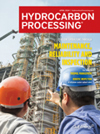Cut emissions and fuel while increasing capacity in fired heaters
According to a recent digital refining article,1 fired heaters are responsible for an estimated 400 MMtpy–500 MMtpy of CO2, with at least 73% of average refinery CO2 emissions coming from combustion.
IP: 18.191.195.110
The Author
Poth, J. - IGS, Schleiden, Germany
Johannes Poth is a Cetek subject matter expert at Integrated Global Services (IGS). He earned an engineering degree in ceramics from the University of Applied Science in Koblenz, Germany. Poth then joined Fosbel as a Quality and Product Manager, specializing in Cetek high-emissivity ceramic coatings. Poth joined IGS in 2017 and continues to support fired heater efficiency optimization projects in Europe and around the world.
Related Articles
From the Archive






Comments